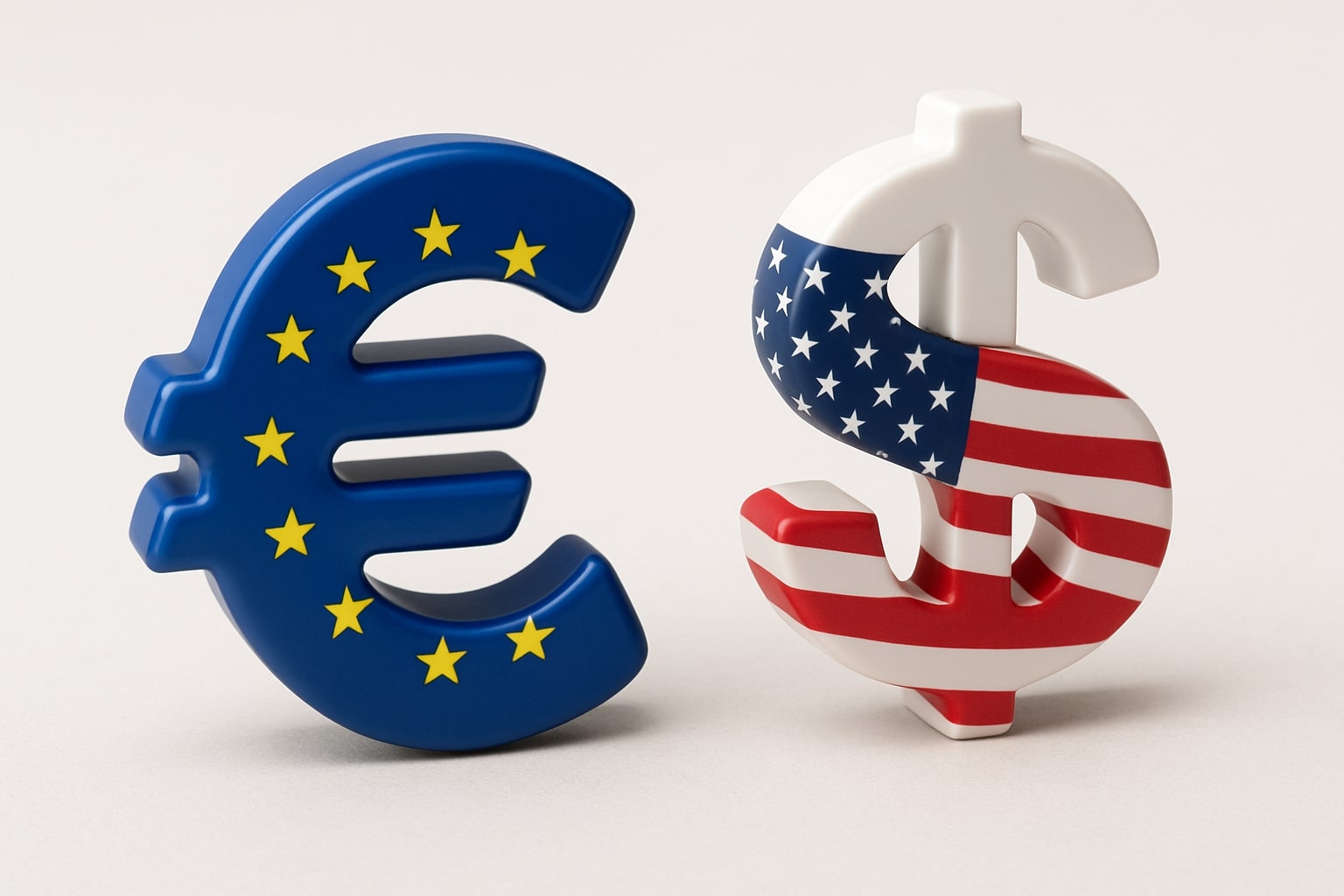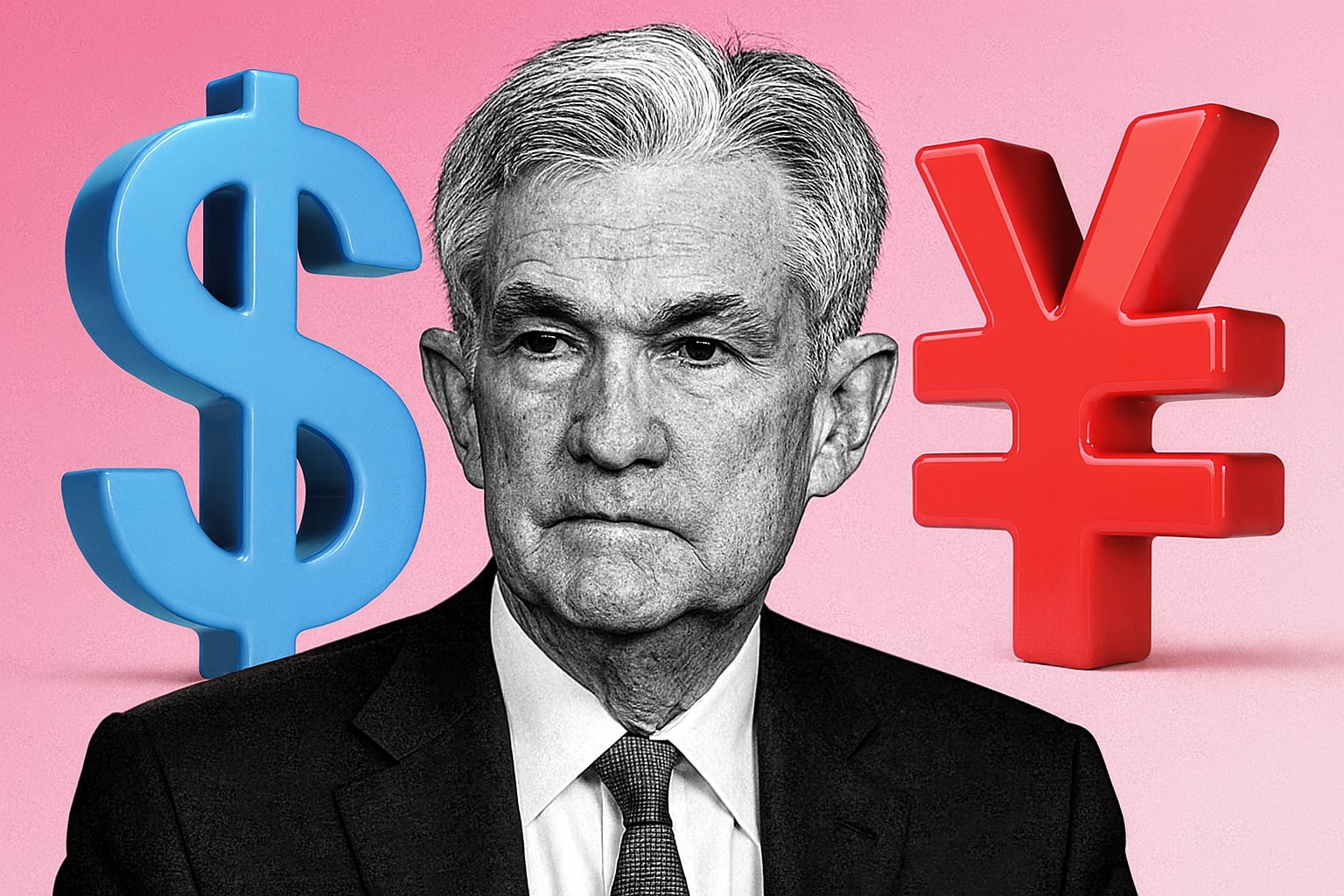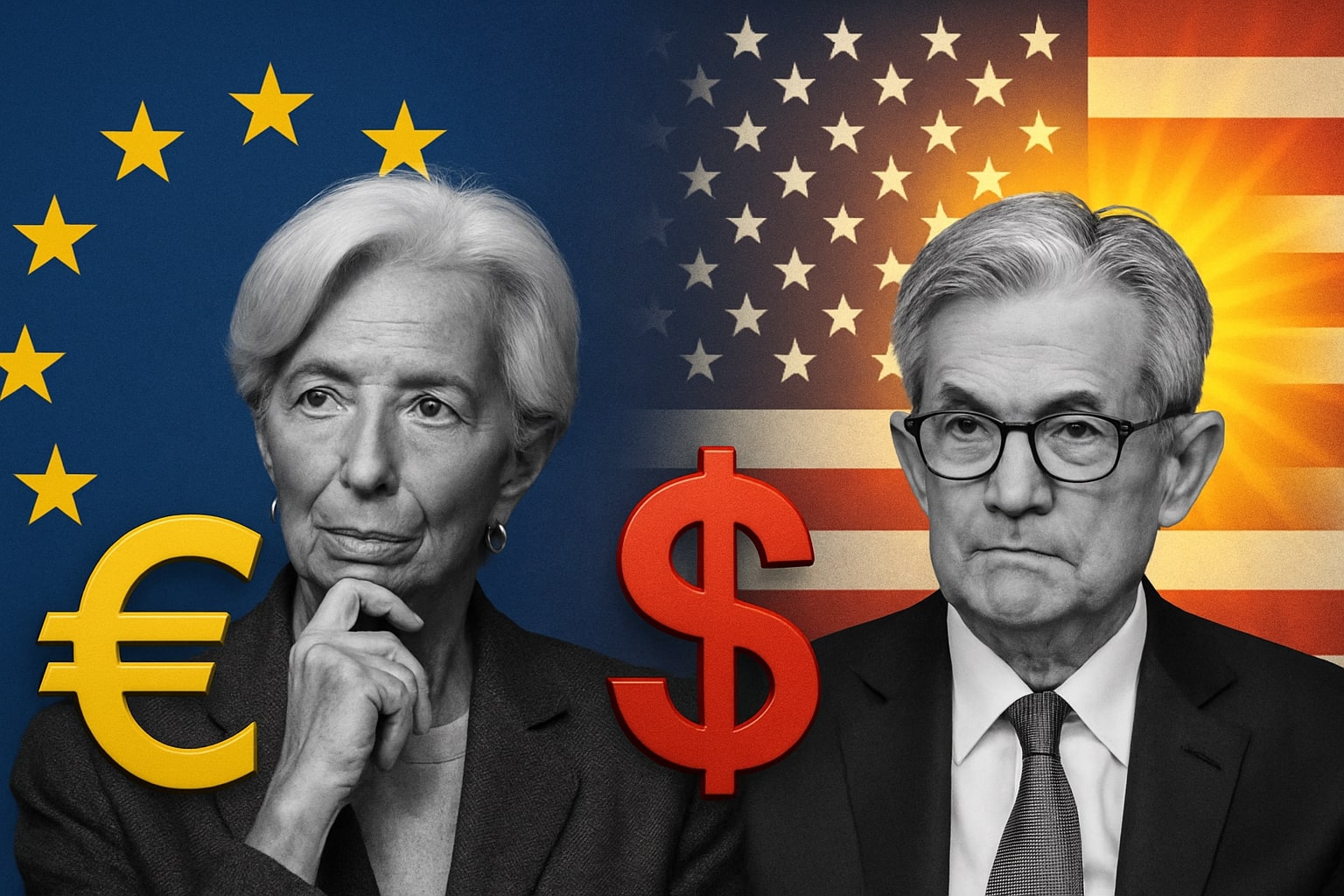EUR/USD Price Forecast: Bears Push Pair Toward 1.1560 as Fed and ECB Divergence Widens
EUR/USD Under Pressure Below 1.1600 With Sellers in Control
The euro-dollar pair (EUR/USD) has been sliding steadily, with the exchange rate pinned near 1.1594 after breaking decisively through short-term support levels. Earlier in the week, EUR/USD failed to sustain rebounds above 1.1640, confirming that buyers lack conviction. Each attempt to bounce from the mid-1.16 range has been met with renewed selling, and the current technical setup signals further downside. The pair is now trading below both the 50-EMA at 1.1645 and 100-EMA at 1.1641, reinforcing a bearish trend structure. Momentum readings underline the weakness, with the RSI hovering near 35, not yet oversold, leaving room for more declines.
Key Technical Markers Show Downside Momentum in EUR/USD
Support has shifted to 1.1560, the next major level under pressure. Traders highlight this zone as pivotal — if broken, the slide could accelerate toward 1.1500, and deeper into the 1.1450–1.1400 corridor. The 1.1620–1.1680 band has flipped into resistance, meaning even modest rebounds face a wall of supply. A more distant recovery point sits at 1.1720–1.1730, the August highs, but with market structure broken, that level appears far removed. Hourly and four-hour charts both confirm lower highs and lower lows, classic bear market dynamics.
Macro Forces: Fed Policy and Powell’s Jackson Hole Signal
The bearish outlook for the euro has been reinforced by the U.S. policy backdrop. Initial jobless claims in the U.S. climbed to 235,000, the highest since 2021, while continuing claims hit 1.972 million, pushing the four-week average to 226,250. The labor market is cooling, but Powell’s Jackson Hole speech emphasized that risks are shifting and policy adjustments are on the table. Fed funds futures now price in 85–90% odds of a September cut, but the U.S. dollar has remained firm as global investors treat it as the least-worst option against weak European growth. The Dollar Index (DXY) trades around 98.74, above its 50-EMA at 98.29, with resistance seen at 99.32 and 99.72. EUR/USD weakness mirrors that strength, as dollar demand outpaces any modest repricing from softer yields.
Eurozone Data: Wage Growth Complicates ECB Policy
The European Central Bank faces its own policy dilemma. Negotiated wages across the euro area rose 3.95% year-on-year in Q2 2025, sharply higher than the revised 2.46% in Q1. The indicator, which covers nine major economies including Germany, France, Italy, and Spain, suggests that second-round inflation pressures remain alive. EUR/USD did not rally on the release, staying flat around 1.1596, but the wage surge complicates ECB decision-making. Higher pay packets risk prolonging inflation above the 2% target, limiting how aggressively the ECB can ease. For traders, this dynamic means that even as the Fed tilts dovish, the ECB may need to remain cautious, leaving EUR/USD stuck between conflicting policy paths.
Market Behavior and Technical Structures on EUR/USD
The daily chart shows EUR/USD moving within a descending channel that began after the 1.1730 spike on August 13. The pair now sits in the 1.16–1.1650 pivot zone, just below the 50-day moving average. A break under 1.1600 has emboldened sellers, and the short-term 20/50 and 20/200 MA crossovers on the four-hour chart confirm bearish momentum. The pair recently tested 1.1581, an area of prior demand, but buyers were unable to sustain momentum, leaving the downside path intact. The MACD remains below its signal line, and price action continues to carve lower highs, suggesting control remains firmly in the hands of bears.
Broader Context: Eurozone Growth and U.S. Dollar Dominance
Beyond technicals, fundamentals are tilted against the euro. Manufacturing PMI data in the U.S. surprised to the upside at 53.3 vs. 49.5 expected, underscoring relative resilience in American output. In contrast, Eurozone growth remains sluggish, with fiscal and trade uncertainties weighing on sentiment. ECB President Christine Lagarde is expected to speak at Jackson Hole as well, but expectations are muted — with inflation still above target and wages accelerating, the ECB may be forced into a reactive stance rather than proactive easing. That contrast with the Fed, which is preparing to cut, leaves EUR/USD vulnerable to deeper declines as capital flows continue to favor U.S. assets.
Insider Flows and Market Positioning
CFTC positioning has revealed that speculative accounts increased net short exposure on EUR/USD in the past week, aligning with the technical breakdown below 1.1600. Options markets echo this caution: strikes around 1.1500 have gained open interest, reflecting trader hedging against further downside. This positioning connects with broader institutional sentiment — equity flows into the U.S. remain strong, while euro-denominated assets struggle to attract buyers given the stagnant growth profile.
Trading Outlook and Buy/Sell Verdict for EUR/USD
The pair’s inability to reclaim 1.1640–1.1670 means rallies are likely to be sold. With immediate support at 1.1560, the bias remains bearish, with a downside target of 1.1500 and potential extension to 1.1460–1.1400 if momentum intensifies. A break above 1.1645 (50-EMA) would be the first sign of stabilization, but until that occurs, EUR/USD remains a sell on strength market.




















